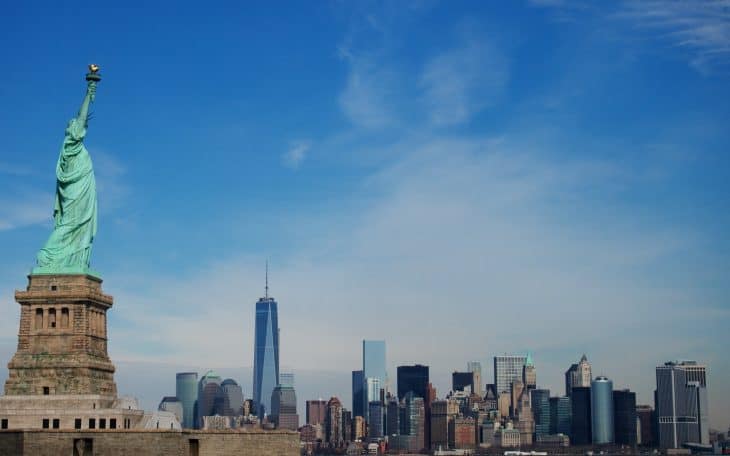
When you think of the Big Apple, its notable skyscrapers and crowded streets immediately come to mind. No wonder it’s the most influential metropolis in all of the Americas. Delve deeper into the city’s history and culture with these New York City facts.
- New York City covers a total area of 790 sq km or 305 sq mi.
- Time in NYC follows the Eastern Standard Time (EST), 5 hours late of Greenwich Mean Time (GMT-5).
- NYC is part of the state of New York, one of the original 13 colonies and states of the U.S.
- As of 2019, the population of New York City is at 19,440,469.
- New York City has the most diverse linguistics with over 800 spoken languages.
- People from New York are called ‘New Yorkers.’
- New York City stands as the largest, most influential American metropolis.
- The capital of the state of New York is Albany, not NYC.
- ‘Manhattan’ can be found both in London and New York City.
- The Empire State building in NYC owns an individual zip code.
- New York City can be found within New York County.
- Fake buildings in NYC serve as camouflaged subway maintenance and ventilation areas.
- NYC was named after James Stuart, The Duke of York, and later King of England.
- Brooklyn Bridge, one of the landmarks in NYC, is older than London’s Brooklyn Bridge.
- The 1.5-mile-long Lincoln Tunnel connects New York City and Weehawken.
- NYC is home to the world’s largest Jewish population outside of Israel.
- A safe deposit box in NYC keeps the eyeballs of the great Albert Einstein.
- NYC pays one-way plane tickets for homeless people who have a guaranteed place to stay.
- A New York bagel equates to ¼-½ of a loaf of bread.
- Footwear and clothing brand PONY literally means ‘Product of New York.’
New York Facts Infographics

‘The Big Apple’ is a famous nickname for New York City.
In the 1920s, a horse racing column in a local newspaper used this phrase to refer to a big money prize at popular horse races around NYC. The journalist heard stable hands in New Orleans call NYC “the big apple” that all horsemen aspired to race at. Hence, New York has been affectionately dubbed the Big Apple.
New York City’s location makes it the gateway to the North American continent.
New York sits right where the Hudson and East rivers empty into a premier harbor. As such, the city became a preferred exit towards the world’s oceans.
Inland NYC also leads to Middle Atlantic and the New England states.
The canals, highways, and railroads in New York serve as travel hubs to travel to and from several parts of the country.
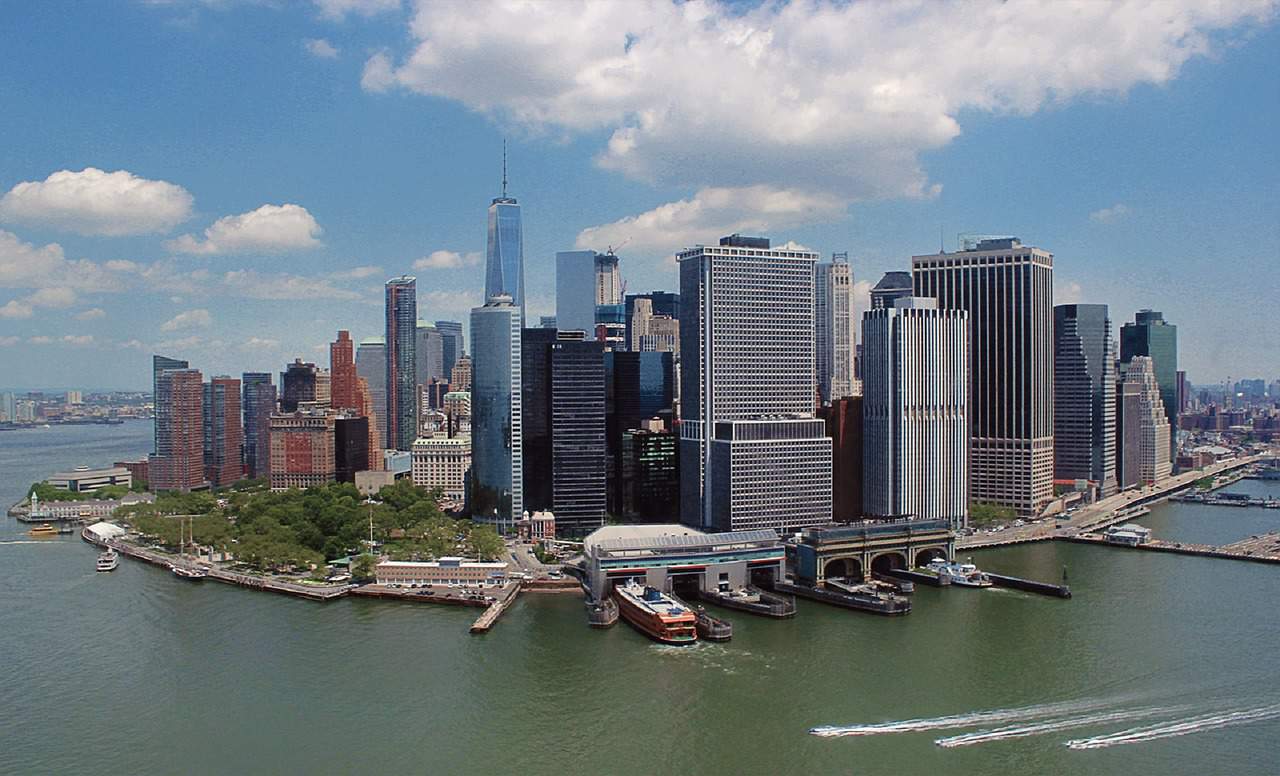
Manhattan used to be known for its oysters.
When the Dutch arrived in Manhattan, they saw massive oyster beds around the city coastline. It is for this reason that Ellis Island and Liberty Island earned the names ‘Little Oyster Island’ and ‘Big Oyster Island.’
Oysters rose to fame in NYC in the 19th century.
In fact, their shells served to pave modern-day Pearl Street. Moreover, they also lined the masonry of the Trinity Church.
A wind tunnel near Flat Iron can raise the skirts of female passersby.
Back then, men would gather outside the infamous building just to watch such instances.
New York has a 150 feet-deep hole.
Found between 36th and 37th street in Park Avenue is a hole as deep as the height of a 15-story building.
Unclaimed bodies in NYC are buried in Hart Island.
The island lies off the coast of the Bronx and is not open for public access. By 1869, the island has been home to around 1 million buried bodies.
The nitrogen gas tanks around New York is not as scary as people think.
Their posts on the street corners around the city are optimal for their job of keeping underground telephone wires dry.
Brooklyn can easily be the 4th largest city in the United States.
If Brooklyn were its own city and not a part of New York City, it’s large enough to take the 4th spot in the biggest U.S. cities.
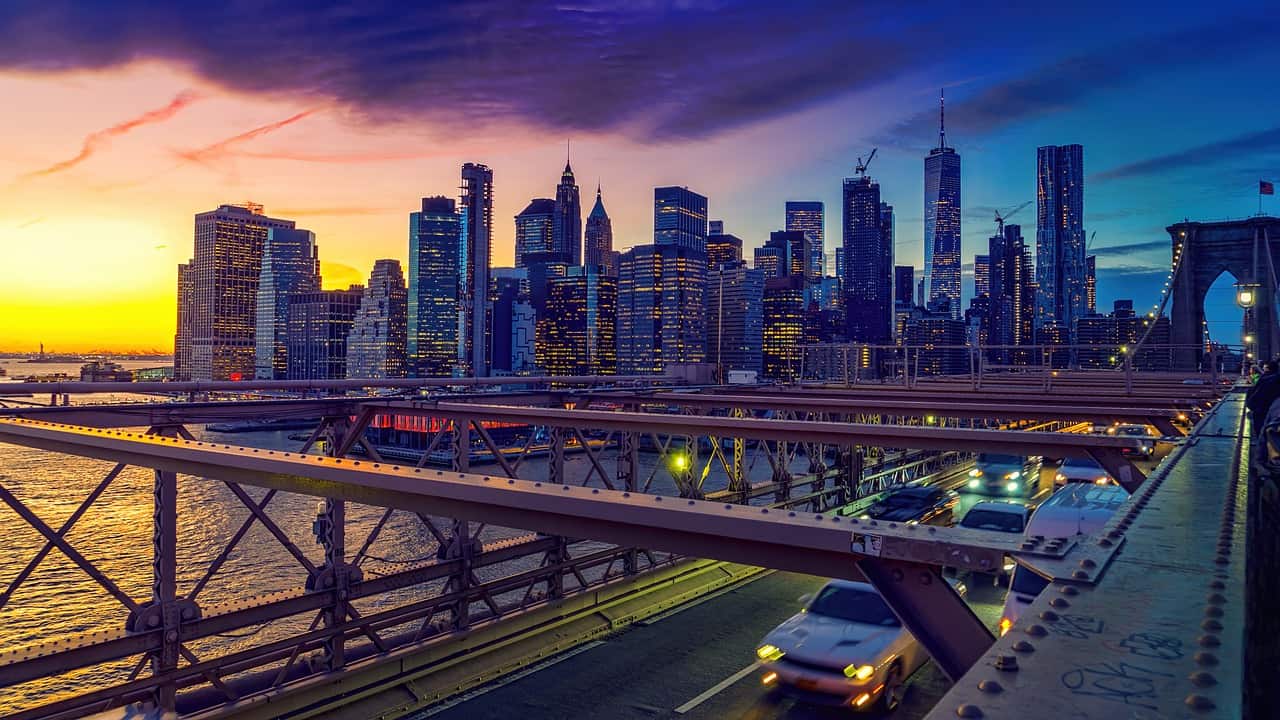
New York City boasts a 520-mile long coastline.
This distance goes longer than the combined coasts of Boston, Los Angeles, Miami, and San Francisco.
New York City is home to the first headquarters of the United Nations.
It was established in 1952 after the end of World War II as a designated international territory.
The first native people to occupy New York were the Lenape.
As members of the Algonquin community, these people farmed, fished, and hunted in the area connecting the Delaware and Hudson rivers.
In 1624, the Dutch West India Company sent people to modern-day Governors Island.
The 30 families sent lived and worked in a tiny settlement on what was then called ‘Nutten Island’ in New Amsterdam.
The first name of New York City was ‘New Amsterdam.’
It was the city’s name until 1664 when the British seized the territory from the Dutch and branded it new with ‘New York City.’ For the following century, New York City witnessed growth in the number and diversity of its population. Aside from immigrants from England, France, Germany, and the Netherlands, there were also indentured servants and African slaves.
The population density of New York City is 27,000 people per sq mi.
Not only does the number make it among the densest major cities in the U.S., but it also includes over 40% of the entire population of the state of New York.
NYC is the city with the most billionaires in the world.
Over 500,000 millionaires reside in the city as well. In other words, New York City is the hot spot for the world’s richest.
In the winter of 1780, New York Harbor froze.
The winter of that year was so harsh to the point that people can walk from Manhattan to Staten Island on the ice of the New York Harbor.
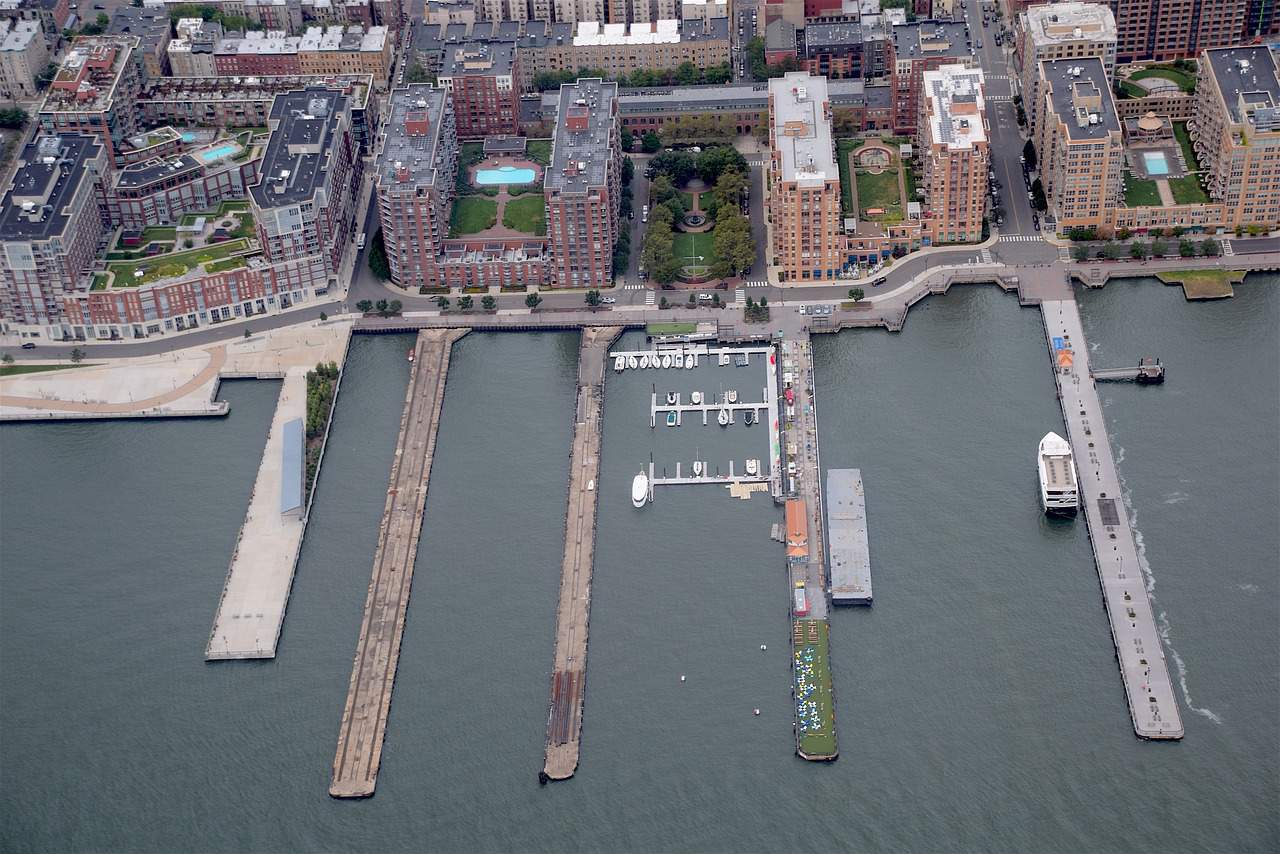
New York City was witness to one of the first acts of domestic terrorism.
Back in 1920, a horse-drawn carriage trotted down Wall Street. The explosives that it carried killed 30 people upon detonation. However, no one was caught and held accountable for the terrorist attack.
A Straw Hat Riot broke out in New York City in 1922.
An unofficial rule in the city prohibited the wearing of straw hats past September 15. However, some stubborn kids schemed of snatching hats a few days prior to the allowed date. It caused an uprising among the people which lasted a few days.
Legitimate cowboys once patrolled the west side of Manhattan.
Their main job was to avoid possible accidents by tussling people out of the way of incoming freight trains. While they were already phased out by 1941, it remains to be one of the New York City facts unknown to many people.
A pneumatic mail tube system used to operate in NYC until 1957.
When it was still operational, the tube system connected 23 post offices spread across 27 miles, moving around 97,000 letters each day.
November 28, 2012 is a historical day for New York.
For the entirety of the day, it was the first time ever for the city to have zero (0) recorded reports of a stabbing, shooting, murder, or other violent crimes or incidents.
New York City legalized credit card minimums.
Congress passed a law in 2010 legalizing a minimum of $10 in credit cards, and it still stands true today.
The New York Pizza Connection is an economic principle followed in the city.
Fairly accurately, it states that the average price of a pizza slice must match the cost of a subway ride such that when one increases or decreases, the other tends to follow suit.
The NYC power outage on July 13, 2019 brought darkness upon The City that Never Sleeps.
The blackout started from a “flawed connection” among equipment key pieces at an NYC electrical substation. Moreover, it plunged 72,000 consumers in the dark from 6:47 that evening until shortly after midnight. What makes these New York City facts amazing is that there were no reported injuries or hospitalizations in the city throughout the duration of the NYC power outage.
It is legal to go topless in public in New York City.
In 2018, New Yorkers even celebrated a “Go Topless Day Parade” wherein participants walked around topless in the city.
On the contrary, farting in a church is considered a misdemeanor.
It follows the law indicting a person who disrupts or disturbs a religious service, burial, funeral, or memorial service “when he or she makes unreasonable noise or disturbance while at a lawfully assembled religious service, funeral, burial or memorial service, or within one hundred feet thereof, with intent to cause annoyance or alarm or recklessly creating a risk thereof.”
NYC parking tickets make contribute around $120 million in revenue for the city.
This collection comes from the 7,000 average parking tickets handed out per day to commercial delivery companies like that of FedEx and UPS.
Joseph Gayetty invented the commercial toilet paper in NYC in 1857.
He introduced his medical-purposed invention with his name printed on every sheet.
The first pizzeria in the U.S. opened in New York City in 1895.
Since then, Lombardi’s has been serving some of the best pizza not just in the city, but in the whole country.
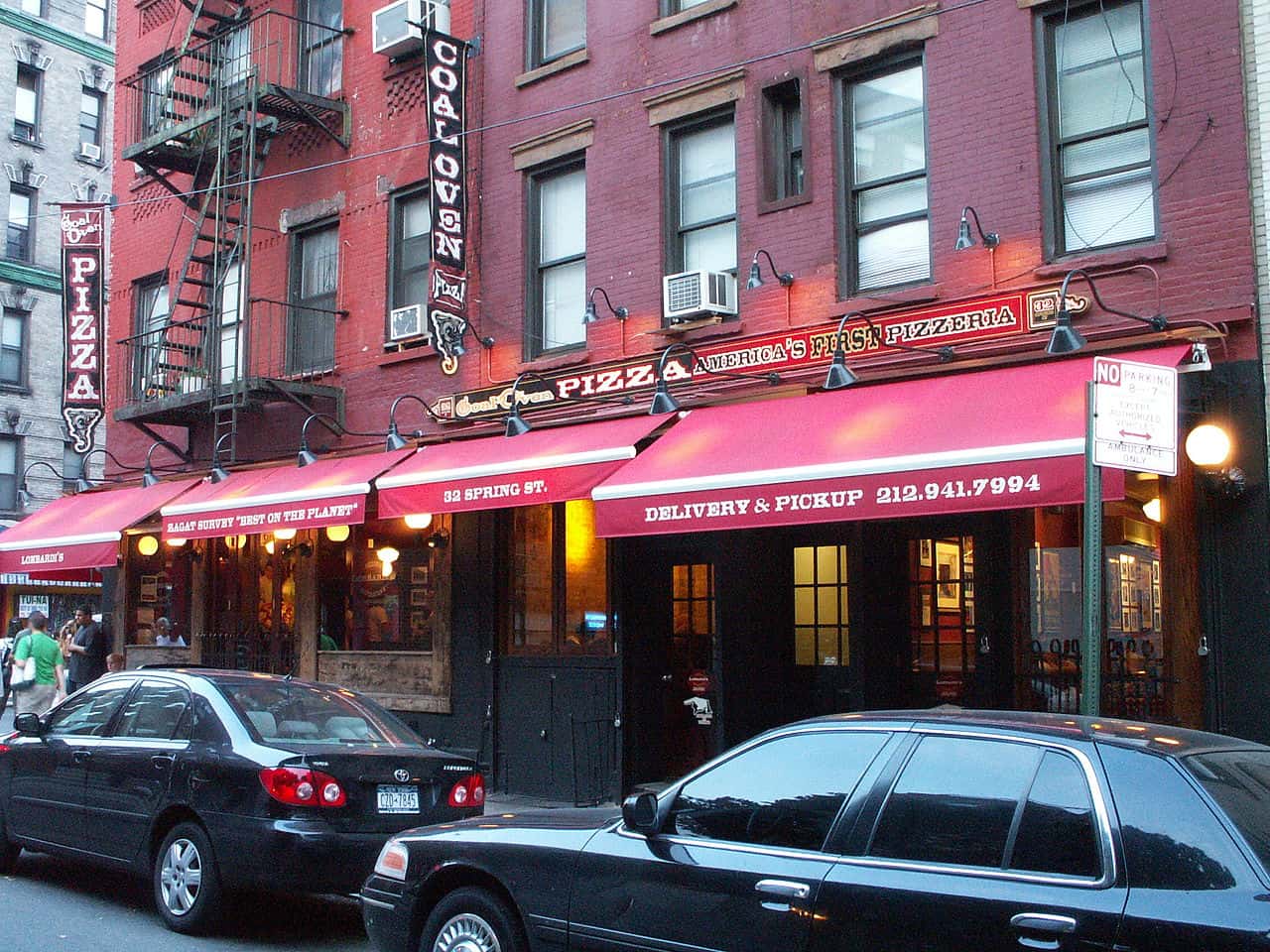
Women were only allowed to enter McSorley’s starting in 1970.
It took the oldest Irish ale house in New York City 116 years to do so since it opened in 1854.
The hot dog stand is an expensive business in NYC.
A permit for one year in Central park can cost more than $289,000.
275 out of 800 known North American bird species take shelter in NYC.
This feat makes Central Park an amazing place for bird watching activities. Experts claim to spot around 100 species each day during spring migration.
The New York City Marathon (NYC Marathon) is the largest marathon in the world.
The first NYC marathon took place in 1970. Now, the course winds through all 5 boroughs of New York City and serves as a qualifying race for Boston.
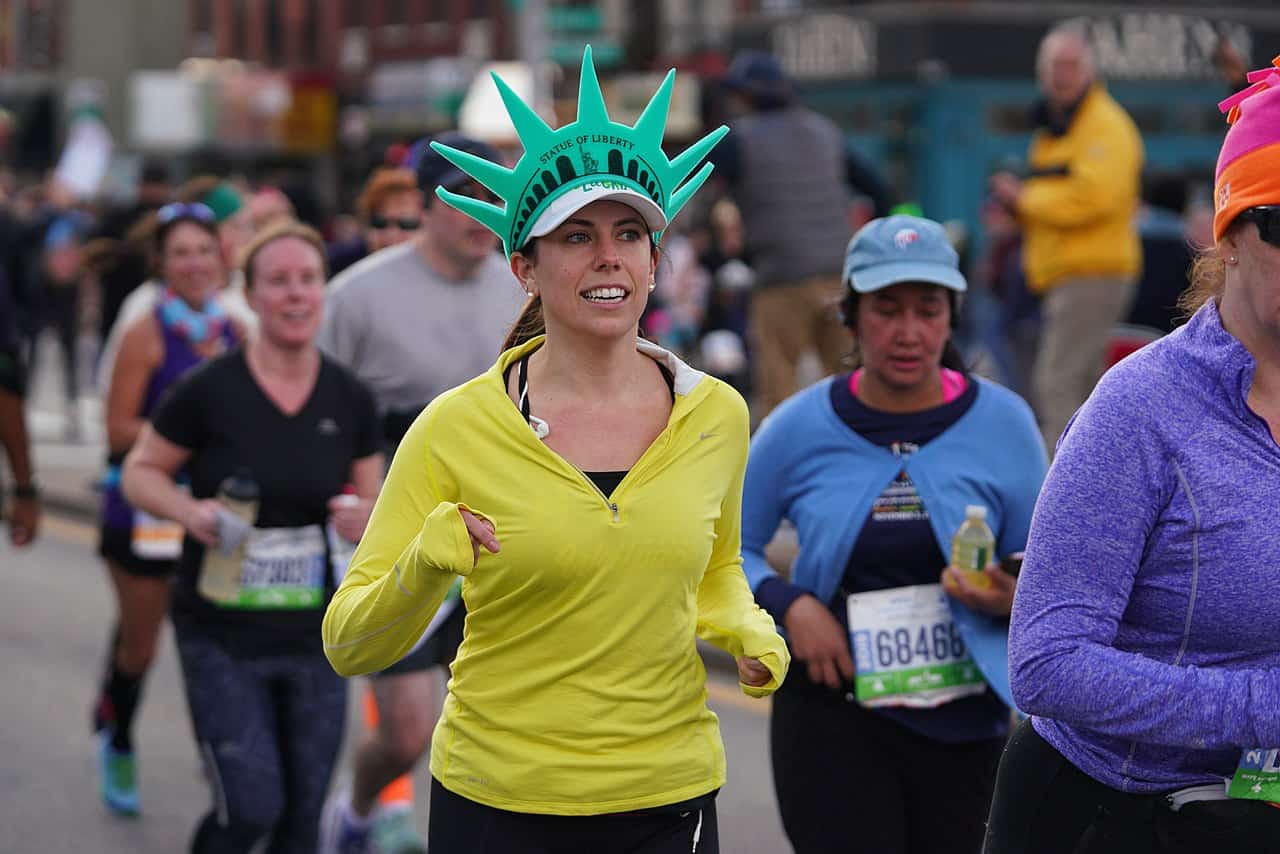
The New York City pass grants free access to over 100 top attractions in the city.
Another benefit is that it pass holders can skip the ticket line entry to some of these attractions. It can either be downloaded using an app or be a physical pass.
The Statue of Liberty in NYC is a gift from France to the U.S.
Given in 1886 for the centennial celebration of America, shipping of the statue took 350 pieces in more than 200 crates while assembly took over 4 months.
New York City is known for being one of the world’s largest cultural centers.
Several art halls, museums, theaters, and cultural associations thrive in the city. Moreover, NYC counts among America’s largest communication centers, largest immigration receiving gates, and largest centers of finance, industry, and trade.
The tourism sector of NYC is one of the city’s most important contributors.
Remarkable historical, religious, and tourist spots in New York City include Broadway, Bronx, Brooklyn Bridge, Zoo, Coney Island, Ellis Island, Empire State Building, Metropolitan Art Museum, Statue of Liberty, Times Square, and Washington Square Park.
The Museum of the City of New York boasts of over 1.5 million NY-related objects.
The collection includes paintings, photographs, and sculptures. It was first established in Gracie Mansion in 1923 until it had to move to its current location in Carl Shurz Park, Fifth Avenue between 102nd and 103rd streets in 1932.
New York City Subway Station is the busiest subway system in the whole of the United States.
However, it only ranks 7th busiest in the world with its 1.7 billion annual riders. Tokyo places top with nearly twice as many riders.
Navigating the entire NYC Subway System would take around 24 hours.
That is if the rider is in a hurry! It is one of the largest subway systems in the world complete with its 34 liens and 460 stops.
Oculus NYC is the most expensive train station in the world.
While construction of the train system cost $4 billion, its design remains to be the simplest. Designer Santiago Calatrava created the Oculus that way so that the likes of his mother can easily find their way through the station without the confusion that dimly lit train stations usually cause.
The deepest subway stop in NYC is the 191st Streets Station at 180 ft below street level.
On the other hand, the highest subway stop is the Smith-Ninth Streets Station at 88 ft above street level.
Watch out for the green and red globes at the subway entrances in NYC.
The general rule states that red globes go with entrances that close at night and green globes go with those that are open 24-7.
The NYC Public Library was the largest marble building in the U.S. when it was built.
Opened in 1911, the building consists of 530,000 cu ft of marble including 12 inches of exterior marble. Its total area of 646,680 sq ft is equivalent to that of the Stephen A. Schwarzman Building.
The New York City Library is the 3rd largest library in the whole world.
In the United States, it ranks second only to the Library of Congress and has a collection of over 50 million books.
New York City’s Federal Reserve Bank keeps is the world’s largest gold storage.
Its vault 80-ft below ground holds over 7,000 tons of gold bars which is worth approximately $90 billion dollars.
The narrowest house in New York City is only around 9 feet wide.
It is located at 75 ½ Bedford Street, West Village.
Times Square was named after the New York Times.
Its original name is Longacre Square until the New York Times moved there back in 1904.
At least 20,000 bodies are buried in Washington Square Park.
This site, along with Bryant Park, Madison Square Park, and Union Square Park used to be cemeteries.
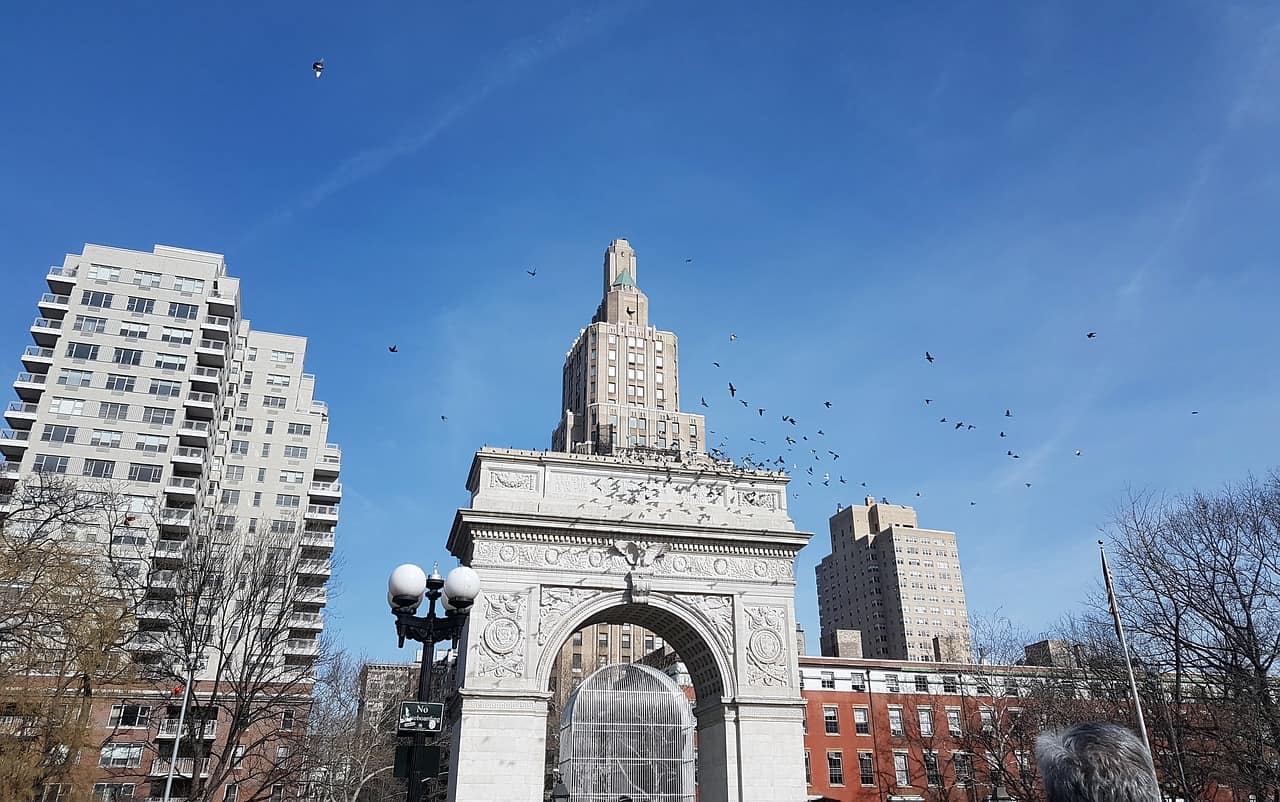
The Lowline in New York is the first underground park on the planet.
Its location is on the West Side of Manhattan. On the other hand, another park in the city is named ‘The Highline.’
The original Penn Station in New York was once among the world’s most beautiful train stations.
However, it had to be torn down due to the declining usage of its rail.
There was once an 18th Street Station on the 4/5/6 line.
It was operational back in 1904-1948 but it is left abandoned now. Still, it is still visible on the local 6 trains.
Among the rooftop bars in NYC, Castell is the only place that offers salted grapefruit.
The rooftop bar of the AC Hotel earned its reputation beyond NYC’s five boroughs. Aside from the classic cocktails and martinis on its menu, it is the place in NYC to offer Paloma, a tart drink of Spanish influence.
Beatles member John Lennon was shot in the archway of The Dakota in New York City.
Mark David Chapman shot the band member on December 8, 1980 in this famous building in New York City. Since 1973, John Lennon has been a resident of the said building until the day of his murder.
The children’s book character Eloise lives in the Plaza Hotel in New York City.
She lives in the “room on the tippy-top floor” of the Plaza Hotel together with her nanny, Weenie the pug dog, and Skipperdee the turtle.
Townsend Harris founded the City College of New York in 1847 as ‘the Free Academy.’
Its original building was located at 23rd Street and Lexington Avenue in Manhattan. In 1961, the City University of New York was established as an umbrella institution dedicated to public colleges in New York City.
The route of the NYC Ferry covers 60 miles of waterway.
It includes more than 21 landings all over the Bronx, Brooklyn, Manhattan, and Queens. Moreover, there are new stops including that of the Astoria, Bay Ridge, Soundview in the Bronx, Sunset Park at the Brooklyn Army Terminal, and Governor’s Island in the summer.
The design of the Central Park Mall was meant for wealthy New Yorkers.
As it is the only straight path in Central Park, the Central Park Mall allows the richest of the rich to stroll, socialize, and show off on the said street.
Was this page helpful?
Our commitment to delivering trustworthy and engaging content is at the heart of what we do. Each fact on our site is contributed by real users like you, bringing a wealth of diverse insights and information. To ensure the highest standards of accuracy and reliability, our dedicated editors meticulously review each submission. This process guarantees that the facts we share are not only fascinating but also credible. Trust in our commitment to quality and authenticity as you explore and learn with us.
